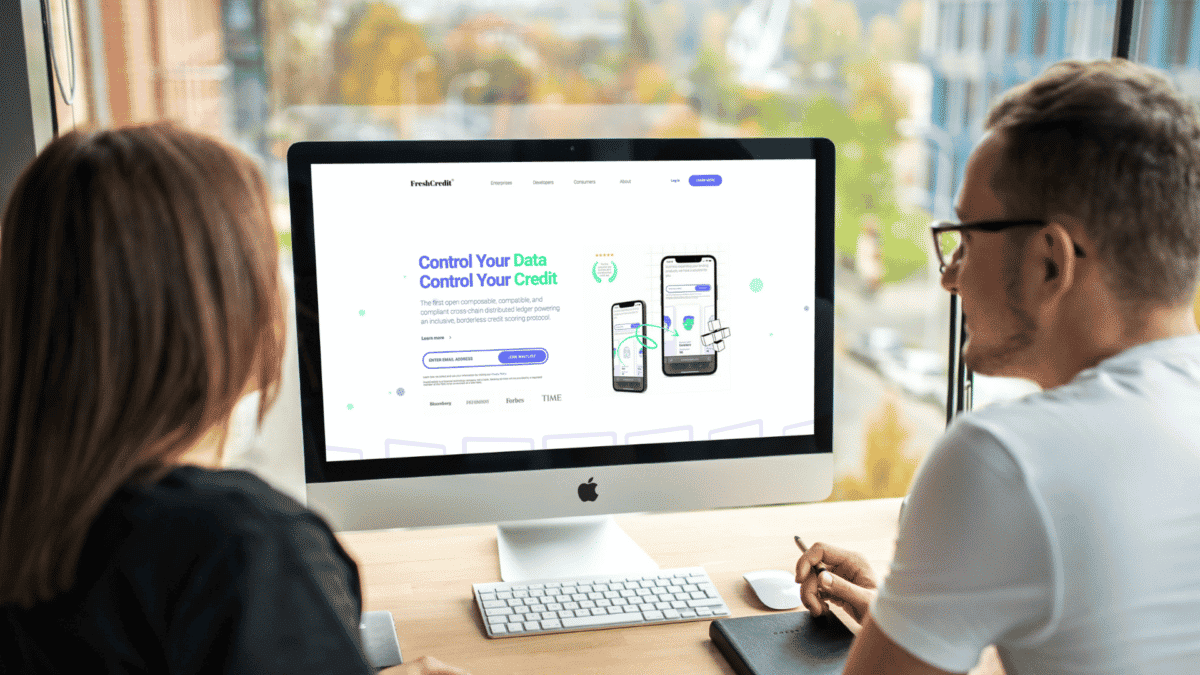If you find yourself getting denied credit cards, loans, and other financial resources, you probably have bad credit. Luckily, there are credit cards designed specifically for people with poor credit.
Opening new credit lines and having the opportunity to rebuild your credit score can be difficult — especially when you already have a low credit score. However, there are some options available to you. By signing up for the right cards and practicing responsible finances, you can move forward with your financial situation.
What is Considered Bad Credit?
Bad credit is typically recognized as a credit score lower than 630 on a range from 300 to 850. A score between 300 and 629 is representative of poor credit. On the other end of the spectrum, a credit score between 720 and 850 is considered excellent.
Your credit score is a number generated based on your credit history. While some actions can build your score, others knock it down. It’s crucial to make debt payments on time and limit your credit cards to avoid bad credit.
You can obtain a free credit report from any one of the three main credit bureaus once every 12 months. Additionally, some websites offer “free” credit reports (but be wary of this because they’re often gimmicks that automatically subscribe you to a paid service).
Because your credit score defines your past long-term credit behavior, it is used to predict your future conduct. So, for banks and other lenders, a credit score is a way to measure your reliability: How likely are you to repay the debt? It’s not something to be taken lightly as it can lead to loan denial or affect your ability to receive other financial resources.
Not to worry if your credit score is less than ideal. You can get a credit card designed for people with bad credit. Using this card correctly, specifically making payments on time, will help you improve your credit score.
We’ve compiled important information about applying for and using a credit card with bad credit. Continue reading to learn everything you need to know and apply to which cards you should avoid. Your credit will be on the mend before you know it.
What to Know Before Applying for a Bad Credit Card
- Know your credit score. Before you do anything, you must know what your credit score is. Not only will it help you find the credit cards you’ll likely get approved for, but it serves as a baseboard for your progress. Find an issuer that provides free access to your score and credit reports. This way, you can reference it frequently to track your improvement.
- Find a credit card with low fees that sends credit reports. Look for secured credit cards with low fees that report to the three major credit bureaus, Equifax, Experian, and TransUnion. Low fees are imperative to making sure that you will be able to make payments. Additionally, the card must report to the national credit reporting agencies for you to build credit.
- Establish an upgrade plan. Just like you’d want a job that has a promotion path, your credit card should also have a way for you to upgrade eventually. Make sure that the issuer can move you to an unsecured card or one with fewer fees.
- Make sure it’s a secured credit card. A secured card can be a good starting point for you to rebuild your credit. This type of credit card is backed or guaranteed by a cash deposit that decides the amount of your credit limit. Frequent small charges and on-time payments will boost your credit score and limit.
Unsecured vs. Secured Credit Cards
The majority of credit cards are unsecured cards. They don’t require a deposit and offer a limited line of credit that you can borrow against. Because these cards aren’t backed by collateral (meaning a lender has nothing to seize if you fail to pay), they are typically for people with a strong credit history.
Secured credit cards are specifically for people with rocky credit histories. They require a deposit, generally $200 or more, that serves as collateral since you’re more likely to default on payments. However, your credit limit and score can increase if you build a positive credit history with this card.
How to Apply for a Credit Card with Bad Credit
Now that you have an idea of the type of credit card you need, it’s time to start applying. It may not be as nerve-wracking as a college or job application, but it’s still an important decision. Follow these guidelines to make the best application decision:
- Apply for a credit card at a bank or credit union where you already have an account. You’re more likely to get approved for a credit card at a financial institution where you have existing history, provided that you have managed your account responsibly.
- See if you’re pre-approved for a credit card. Additionally, you can do some paperwork to see if you meet the lender’s criteria, making you pre-qualified.
- Include your income on your application. Be sure to include your total income on your application. While your credit score is a good indicator of your past financial reliability, your income level, and debt-to-income ratio are helpful measurements that gauge whether you’ll be able to make payments.
- Expect your credit score to go down a few points. When determining if you’re fit for credit card approval, a lender will usually check your credit report. This hard inquiry can lower your score and remain on your report for several months. Luckily, the damage is typically minimal and goes away with time.
- Don’t give up if you’re denied. You can call a reconsideration line to make your case to a representative. Figure out what you will say before the call: know why you were denied, have a good reason for wanting the card, and prepare examples of how you’re fiscally responsible.
How to Improve Your Credit Score Using Your New Card
Once you get your new card, it’s time to focus on improving your bad credit. Here are six tips to improve your credit score when using your new card:
- Use your new card. Some people are hesitant to use credit cards because of the stigma surrounding them. As long as you make responsible purchase decisions, using your credit card will build your credit.
- Don’t overuse it. It’s advised that you keep your credit utilization, or the percentage of available credit you use, under 30 percent. This way, you can still pay your bill while boosting your credit. You can solve this ratio by dividing your balance by your credit limit (balance ÷ credit limit = credit utilization).
- Set up a system for payment reminders. It can be easy to overlook due dates amidst the chaos of life. Set calendar alerts so that you’ll never miss a payment. You may even want to set reminders to warn you a couple of days before the due date so you can make sure everything is in order.
- Make full payments on time. It’s best to pay your balance in full every month, but that’s not always feasible. Paying the minimum amount by the due date is also acceptable. Avoiding those high-interest rates, made even higher by your bad credit, is crucial.
- Track your progress. As mentioned previously, checking your credit score and report often is necessary to determine if your efforts are paying off. You should closely examine your credit report to make sure no inaccuracies are bringing your score down.
- Keep your account open as long as possible. How long your credit account is open is positively related to your credit score. That is, the older your account is, the more your credit score will increase. If there is a compelling reason to close the account, such as a fee on a card you’re not using, it’s best to do so.
How Long Will It Take to Fix Bad Credit with a New Card?
Repairing bad credit with a new card could take as little as a few months or as much as a few years. Some negative items can sit on your report for an astonishing 7 to 10 years. The speed at which you can fix your credit depends on the severity of your credit history and the size and frequency of your payments.
Larger payments on your credit account every month will help you build up your credit more quickly. Conversely, missing payments or only paying the minimum amount will lengthen the process.
If you have any outstanding debt, focus on paying it down before building your credit. Once you reduce your current debt, you can incur and pay off smaller amounts of debt on your new credit card. By doing this, you are increasing your reliability to pay the debt.
In turn, you will raise your credit score, thus improving your credit. Unfortunately, no tried and the accurate timeline for fixing your credit — how long it takes varies by person.
Dealing with the high fees, steep interest rates, and subpar customer service associated with credit cards for bad credit is not ideal. The good news is that bad credit cards are temporary, no matter how long it takes to repair your credit.
What Types of Cards Should You Avoid With Bad Credit?
- Unsecured credit cards. Unsecured credit cards aren’t usually the best option for people with bad or no credit. These credit cards have zero collateral, so your credit limit revolves around your credit risk (which is high). This means that you’ll pay higher fees and interest rates.
- Rewards cards. Fancy cash back and travel cards offer enticing rewards. However, these cards are for people with good or excellent credit, so applying for these cards will hurt your credit score to no avail. Focus on improving your credit before opening one of these cards.
- Prepaid debit cards. Prepaid debit cards are promoted as cards for people with bad credit, but they don’t improve your credit at all. You simply make a deposit, and then purchases are subtracted from your balance like a gift card.
- Merchandise cards. These are credit cards in the sense that you open a line of credit with a store. However, you can’t use them for everyday purchases, and they don’t report to credit bureaus. Ergo they do not help you repair credit.
- Cards without a grace period. These cards start accruing interest right away. Also, pay attention to cards with high fees as they try to mask them with low deposits. Be sure to read the fine print.
Your bad credit isn’t a lost cause. There are numerous credit cards available with the specific intention of helping people repair their poor credit. You should have a clear understanding of what to look for and avoid in credit cards for bad credit.
When you open a new line of credit, stay on top of all of your payments. Using your credit responsibly right away, you can work toward accessing credit cards with more attractive perks and features. Think of this first card as a stepping-stone. Master the financial responsibility at this level, and you can advance to a more flexible and rewarding option.


























